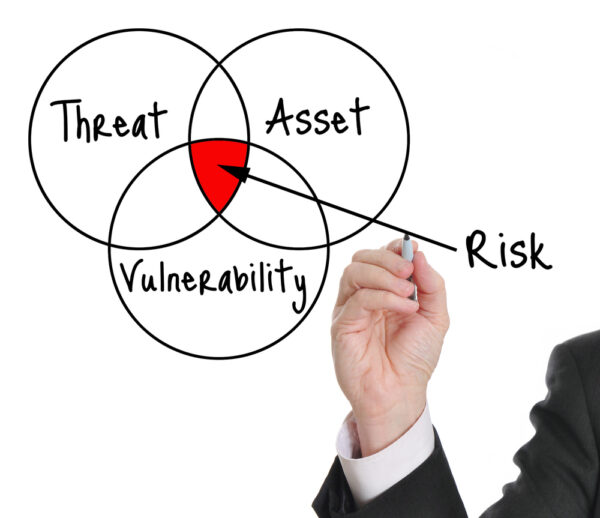Last updated on January 19, 2023
With the exponential advancement in technology, the end goals of most organizations significantly depend on the technology. As a Chief Executive Officer, you understand that any disruption to your information systems can certainly interrupt your operations, minimize your supply chain, affect your reputation, and risk customer data along with the intellectual property. According to the Cyber Crime Study by the Ponemon Institute, in 2013 the cost of cybercrime for enterprises was $11.6 million extending from $1.3 million to $58 million. This makes cybersecurity highly critical to ensure that customer compliance and retention in any business. Therefore, you need to stay abreast of different approaches to cyber security to understand what makes an effective cyber security strategy.
Essential Cyber Risk Management Concepts
Make sure you include cyber risks in the current risk management and governance processes.
Cybersecurity is not only about enforcing a checklist of requirements—Cybersecurity is minimizing cyber risks to a great level.
Keep up cyber risk management discussions with your team.
Hold conversations weekly with those who are responsible for cyber risk management. Enhance your awareness regarding current risks that affect your business and related business impact.
Implementing the best cybersecurity practices.
A dynamic cybersecurity program involves industry standards and best practices to protect systems and analyze potential problems. It informs about processes of new threats and leads to on time response and recovery.
Analyze and control particular cyber risks.
Concluding critical assets and associated impacts of cyber threats are necessary to understanding the exposure to risk–from competitive, and reputational to financial, or regulatory. Risk evaluation results allow to find and set up particular protective measures, allocating resources, permitting long-term investments, and enforcing policies and strategies to manage cyber risks.
Provide review.
Executives are responsible for controlling and ensuring enterprise risk management. The regular assessment of cybersecurity budgets, IT acquisition plans, risk assessment results, IT outsourcing, cloud services, incident reports, and top-level policies come under taking care of cyber activities.
Create and monitor incident response plans
Even a safer organization will experience a language in order to address and manage cyber risk as a cyber incident at a particular point in time. When a network security mission is equal ‘in priority to risk-prone areas, like being penetrated, a CEO must be ready to answer a monetary and reputational risk. “What is an alternative plan?” Cyber incident response strategies should be discussed and practised every day in order to eliminate any flaws.
Track the effectiveness of cyber incident response planning throughout the business
The faster responsive actions can stop or limit potential damage and require coordination with your executives and stakeholders. This includes your human resources, Chief Information Officer, Chief Security Officer, operators, general counsel, Chief Information Security Officer, and public affairs. You need to integrate cyber incident response policies and techniques with present disaster recovery and business continuity strategies.
Complete awareness of cyber threats.
Situational awareness of an enterprise cyber risk environment encompasses on-time monitoring of cyber incidents coupled with the awareness of current threats point within the Federal Government for critical vulnerabilities related to that organization and business impacts.
Analyzing, controlling, and improving the cyber risk management strategies and integrating risk data from various sources and high participation in threat information and sharing with partners help to respond to incidents in a better way and ensure that a company’s protective measures commensurate with the risks.
Risk management strategy
You need to begin with a cybersecurity framework extended from each area of the business to understand what the right risk posture of the business should be.
Guidance Software recommends using advanced technologies that can find and map data across the enterprise. When the data is mapped, organizations make strategic decisions on data governance and lower their risk footprint. For example, even with cybersecurity training and secure security culture, sensitive data can be leaked simply by accident, for instance, data stored in private rows in the form of spreadsheets or integrated into notes within employee presentations or heavy email threads. Analyzing the business for important data at rest and then wiping out any data stored where it does not relate entirely, lower the risk of a random data loss.
Deloitte recommends that the risk management process considers the Capability Maturity Model approach that involves the following five levels:
1). Start (ad hoc, chaotic, and unique heroics) – the initial step for the use of an undocumented repeat process.
2). Repeatable – the process includes the right documentation and repeating the same steps may occur.
3). Explained – the process is defined and considered as a standard business process.
4). Controlled – the process is quantitatively controlled according to agreed-upon metrics.
5). Upgrading– The process management includes deliberate process optimization.
When the essential risk posture is known, analyze the enterprise technology infrastructure to acknowledge a baseline for the pertinent risk posture and what the enterprise needs in order to perform to migrate from the existing state to the required state of risk exposure.
When the required steps are taken to understand potential risks, there will be low-risk exposure and to becoming victim to a cyber attack.
Deloitte recommends doing a risk/reward calculation, then improving those network security enhancements to gain the highest improvements at no cost. Some organizations may be convenient for different security upgrades being done. Others, especially in regulated industries, will need to be comfortable with the advanced security upgrades. There should be incremental steps, like 6 percent improvement within six months that can be determined to check if a business is shifting toward its required cybersecurity risk posture.
Regular process
Cybersecurity risk management is a dynamic process. According to the NIST Framework, it is “a living document” that should be revised and updated according to changing requirements. Once an organization performs its real risk assessment and moves from the current to the desired risk posture, regular assessments should be done to understand potential vulnerabilities and how to tackle them to manage the risk posture.
With the increase of cyber attacks and frequent data hacking, leaders across the world are investing in cyber security to keep their businesses secure from malicious activities. Cybersecurity is not an alternative but a need for businesses thriving to make their unique place amongst their competitions.














Be First to Comment